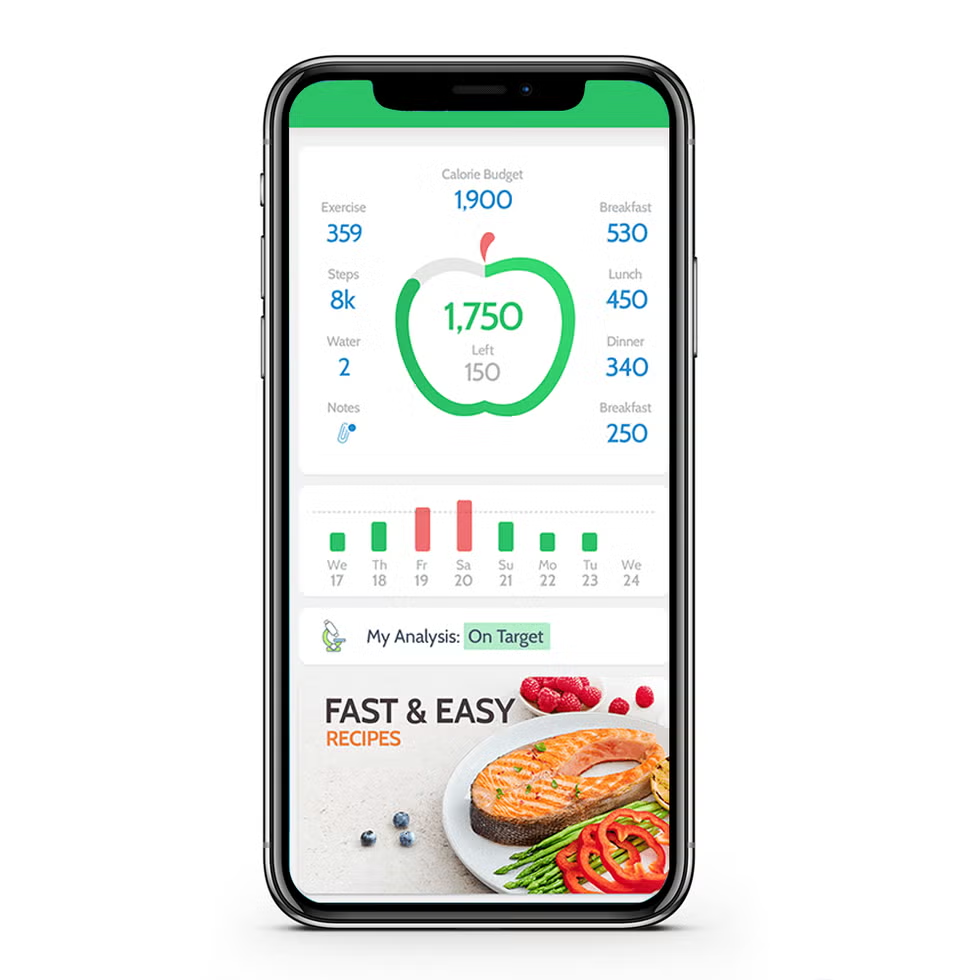Weight loss devices are tools designed to help individuals monitor, track, and manage various aspects of their health and fitness journey towards achieving their desired weight goals. These devices leverage modern technology to provide insights, data, and feedback that can aid in making informed decisions and adjustments to one’s lifestyle.
Weight loss devices typically work by collecting and analyzing data related to physical activity, calorie intake, body composition, sleep patterns, and other relevant metrics. This information is then presented to users through user-friendly interfaces, such as mobile apps or dedicated displays, allowing them to track their progress and make necessary adjustments.
There are various types of weight loss devices available in the market, each serving a specific purpose or targeting different aspects of weight management. Some of the most common types include:
- Fitness Trackers and Smartwatches: These wearable devices monitor physical activity levels, steps taken, calories burned, and sometimes even heart rate and sleep patterns. They provide real-time feedback and motivational prompts to encourage users to stay active and meet their daily fitness goals.
- Body Composition Monitors: These devices use bioelectrical impedance analysis (BIA) or other advanced technologies to measure body fat percentage, muscle mass, and other body composition metrics. This information can help users track their progress and adjust their diet and exercise routines accordingly.
- Smart Scales: Unlike traditional scales that only measure weight, smart scales can provide a comprehensive analysis of body composition, including weight, body fat percentage, muscle mass, and other metrics. Some advanced models can even recognize individual users and track their progress over time.
- Activity Trackers: Similar to fitness trackers, activity trackers are designed to monitor physical activity levels, such as steps taken, distance covered, and calories burned. They often come in the form of wearable devices or smartphone apps.
- Heart Rate Monitors: These devices measure heart rate during physical activity, providing valuable insights into exercise intensity and calorie burn. They can help users optimize their workouts and ensure they are exercising at the appropriate intensity level for their goals.
- Food Logging Apps and Devices: These tools allow users to track their calorie intake, macronutrient ratios, and nutrient consumption. Some devices even come with built-in barcode scanners or voice recognition capabilities to make food logging more convenient.
- Sleep Trackers: Adequate sleep is crucial for weight loss and overall health. Sleep trackers monitor sleep patterns, including sleep duration, sleep stages, and sleep quality, helping users identify and address potential sleep issues that may be hindering their weight loss efforts.
By combining data from various weight loss devices, users can gain a comprehensive understanding of their overall health and fitness levels, enabling them to make informed decisions and adjustments to their lifestyle for sustainable weight loss and improved well-being.
Table of Contents
Fitness Trackers and Smart Watches
Fitness trackers and smart watches have become essential tools for individuals looking to lose weight and maintain a healthy lifestyle. These wearable devices offer a comprehensive approach to tracking various aspects of your daily activities, calorie intake, and overall fitness progress.
Role in Weight Loss:
One of the primary roles of fitness trackers and smart watches in weight loss is their ability to accurately monitor calorie expenditure. By tracking your steps, distance covered, and intensity of physical activity, these devices provide valuable insights into the number of calories you burn throughout the day. This information can help you create a calorie deficit, which is crucial for successful weight loss.
Tracking Calories:
Many fitness trackers and smart watches integrate with calorie-tracking apps or have built-in food logging features. This allows you to input your daily food intake and monitor your calorie consumption. By combining calorie intake data with calorie expenditure data from physical activity, you can achieve a better understanding of your overall calorie balance, making it easier to adjust your diet and exercise routine accordingly.
Activity Levels:
These devices excel at tracking various types of physical activities, such as walking, running, cycling, swimming, and even strength training. They provide detailed metrics like steps taken, distance covered, active minutes, and calories burned during workouts. This data can motivate you to increase your activity levels and meet your daily or weekly fitness goals.
Goal Setting:
Fitness trackers and smart watches often allow you to set personalized goals for steps, distance, calories burned, or active minutes. These goals can serve as motivational targets, encouraging you to push yourself further and stay committed to your weight loss journey. Many devices also offer reminders and prompts to help you stay active throughout the day.
Popular Models:
Some popular fitness trackers and smart watches known for their weight loss tracking capabilities include:
- Apple Watch
- Fitbit Versa/Sense/Charge
- Garmin Venu/Vivoactive/Forerunner
- Samsung Galaxy Watch
- Xiaomi Mi Band
These devices offer a range of features, including heart rate monitoring, sleep tracking, GPS tracking for outdoor activities, and compatibility with various fitness apps. Choosing the right model will depend on your specific needs, budget, and personal preferences.

Body Composition Monitors
Body composition monitors are devices that provide detailed insights into the makeup of your body beyond just your weight. They use bioelectrical impedance analysis (BIA) technology to send a low-level electrical signal through your body and measure the resistance to that signal. This resistance varies based on the different types of body tissues, allowing the device to estimate your body fat percentage, muscle mass, and other key metrics.
Measuring body fat percentage is crucial for weight loss because it helps you track changes in your actual fat mass, rather than just your overall weight, which can be misleading. A high body fat percentage is associated with an increased risk of various health problems, such as heart disease, diabetes, and certain types of cancer. By monitoring your body fat percentage, you can ensure that you’re losing fat while preserving or even building lean muscle mass.
In addition to body fat percentage, body composition monitors can also provide insights into your muscle mass, which is essential for maintaining a healthy metabolism and overall physical fitness. A higher muscle mass means your body burns more calories at rest, making it easier to maintain a calorie deficit and lose weight.
Some advanced body composition monitors also measure other metrics, such as your body water levels (hydration), bone density, and even your metabolic rate. Understanding your metabolism can help you better understand your calorie needs and make adjustments to your diet and exercise routine accordingly.
When it comes to top-rated body composition monitors, some popular models include the Omron Body Composition Monitor, the Tanita Body Composition Monitor, and the RENPHO Smart Body Fat Scale. These devices often come with accompanying apps that allow you to track your progress over time and set goals for yourself.
Using a body composition monitor in conjunction with other weight loss tools, such as fitness trackers and food logging apps, can provide a comprehensive picture of your health and fitness journey, helping you make informed decisions and stay motivated along the way.
Smart Scales
Smart scales are an excellent tool for tracking weight loss progress. Unlike traditional scales, these advanced devices connect to apps and provide detailed insights beyond just your weight. By monitoring weight trends over time, smart scales help you understand how your lifestyle choices impact your body composition.
One of the key advantages of smart scales is their ability to sync data with fitness apps and devices. This seamless integration allows you to view your weight fluctuations alongside other metrics like activity levels, calorie intake, and sleep patterns, giving you a comprehensive picture of your health journey.
In addition to weight tracking, many smart scales offer advanced body composition analysis. These scales use bioelectrical impedance analysis (BIA) technology to estimate your body fat percentage, muscle mass, bone mass, and other vital metrics. This information can be invaluable for tailoring your diet and exercise routines to achieve your desired body composition goals.
When choosing a smart scale, look for models that offer accurate weight measurements, consistent body composition readings, and compatibility with popular fitness apps and ecosystems. Some recommended smart scales include the Fitbit Aria 2, Withings Body+, Eufy Smart Scale P1, and Garmin Index S2. These scales offer features like multiple user profiles, pregnancy mode, and athlete mode, catering to a wide range of needs.
Activity Trackers
Activity trackers are wearable devices designed to monitor and track various aspects of your daily physical activity. These devices can provide valuable insights into your movement patterns, helping you stay motivated and accountable on your weight loss journey.
One of the primary functions of activity trackers is step counting. By accurately tracking the number of steps you take throughout the day, these devices can give you a clear picture of your overall activity level. Many trackers also estimate the distance covered based on your stride length, allowing you to set and achieve daily step or distance goals.
In addition to steps and distance, activity trackers often calculate the number of calories burned during different activities. This information can be particularly useful for those trying to create a calorie deficit for weight loss. By understanding your calorie expenditure, you can make more informed decisions about your diet and exercise routine.
Another important feature of activity trackers is the ability to monitor sedentary time. Prolonged periods of inactivity can have negative impacts on weight management and overall health. These devices can remind you to get up and move around periodically, helping you avoid extended sedentary periods.
Many modern activity trackers are also water-resistant or waterproof, making them suitable for tracking activities like swimming or other water-based exercises. This versatility allows you to accurately monitor your fitness efforts across a wide range of activities.
Overall, activity trackers provide a comprehensive overview of your daily movement patterns, helping you stay motivated, set achievable goals, and make informed decisions to support your weight loss efforts.

Heart Rate Monitors
Heart rate monitors are valuable tools for weight loss as they provide insights into your exercise intensity and help you optimize your workouts for fat burning. During exercise, your heart rate corresponds to different training zones, each offering specific benefits for weight loss.
The fat-burning zone, typically between 60-70% of your maximum heart rate, is ideal for low-intensity, steady-state cardio exercises like walking or light cycling. Exercising in this zone encourages your body to burn a higher percentage of calories from fat stores, making it an effective approach for gradual and sustainable weight loss.
On the other hand, the cardio zone, around 70-85% of your maximum heart rate, is better suited for more intense activities like running, cycling, or high-intensity interval training (HIIT). While you may burn a lower percentage of calories from fat in this zone, the overall calorie burn is often higher, leading to greater overall weight loss.
Choosing the right heart rate monitor is crucial. Look for models with accurate heart rate tracking, comfortable fit, and compatibility with your preferred fitness apps or devices. Chest strap monitors are generally more accurate than wrist-based monitors, but the latter are more convenient and user-friendly.
Once you have a heart rate monitor, use the data it provides to track your progress, adjust your workout intensity, and ensure you’re spending enough time in the optimal heart rate zones for your weight loss goals. Remember, consistency and a balanced approach combining cardio, strength training, and a healthy diet are key to sustainable weight loss success.

Food Logging Apps and Devices
Food logging apps and devices can be powerful tools for losing weight by helping you track your calorie intake and nutrient consumption. Many apps allow you to easily log the foods you eat by searching for items in their database or scanning barcodes. This takes the guesswork out of portion sizes and calorie counts.
Advanced food logging apps go beyond just tracking calories. They provide detailed nutrient breakdowns, showing you how much protein, fat, carbs, vitamins, and minerals you’re consuming each day. This can help ensure you’re getting a balanced diet while in a calorie deficit for weight loss. Some apps even provide personalized nutrient targets based on your body stats and fitness goals.
Portion control tools like digital food scales and measuring cups/spoons integrate with many food logging apps. Using these tools ensures you log accurate portion sizes, preventing underestimation of calorie intake – a common pitfall. Certain devices also use image recognition to estimate portion sizes by analyzing photos of your meals.
Overall, food logging technology removes much of the hassle of manually tracking your diet. The awareness and accountability it provides are invaluable for sustainable weight loss. When combined with other devices that track activity levels, these apps give you a complete picture of your energy balance.

Sleep Trackers
Getting enough quality sleep is crucial for weight loss and overall health. Lack of sleep can disrupt hormones that regulate appetite, leading to increased hunger and cravings for unhealthy foods. Adequate sleep also supports muscle recovery and replenishes energy levels for physical activity.
Sleep trackers measure various aspects of your sleep, including duration, cycles (light, deep, REM), and quality. Many devices use actigraphy (motion sensing) or heart rate monitoring to track sleep stages. Some even detect snoring, sleep apnea, and restlessness.
Top sleep trackers include smartwatches like the Apple Watch, Fitbit, and Samsung Galaxy Watch, as well as dedicated sleep tracking devices like the Withings Sleep Analyzer and Beautyrest Sleeptracker. Apps like Sleep Cycle and Pillow use your smartphone’s sensors to monitor sleep.
By tracking your sleep patterns, you can identify issues like insomnia or sleep deprivation that may be hindering your weight loss efforts. Making adjustments to your sleep routine based on the data can lead to better sleep quality, increased energy levels, and more effective weight management.
Choosing the Right Device
When it comes to selecting the best device for losing weight, there are several factors to consider. Your budget, desired features, and integration capabilities with other apps or programs should all play a role in your decision-making process.
Budget: Weight loss devices can range from relatively inexpensive fitness trackers to more sophisticated and pricey options like smart scales or body composition monitors. Determine your budget upfront and look for devices that offer the features you need within your price range.
Desired Features: Different devices cater to different needs. If you’re primarily focused on tracking physical activity, a fitness tracker or activity monitor might be the best choice. If you want to monitor your body composition changes or track your sleep patterns, a smart scale or sleep tracker could be more beneficial. Consider the specific metrics you want to track and prioritize devices that excel in those areas.
Integration Capabilities: Many weight loss devices can sync with popular fitness apps or online programs, allowing you to consolidate your data and track your progress more effectively. If you already use a particular app or program, look for devices that seamlessly integrate with it to streamline your weight loss journey.
Additionally, consider factors like battery life, water resistance (if you plan to use the device during water-based activities), and ease of use. Some devices may have a steeper learning curve than others, so choose one that aligns with your technological proficiency.
Remember, no single device is a magic solution for weight loss. These tools are meant to provide valuable data and insights to support your overall healthy lifestyle changes, including a balanced diet and regular exercise routine.
Combining Devices for Maximum Results
While using a single weight loss device can provide valuable insights and data, combining multiple devices can create a comprehensive tracking system that covers all aspects of your health and fitness journey. By integrating various devices, you can gain a holistic understanding of your progress and make more informed decisions to achieve your weight loss goals effectively.
One powerful approach is to pair a fitness tracker with a smart scale. The fitness tracker monitors your daily activity levels, exercise routines, and calorie burn, while the smart scale provides accurate body composition data, including weight, body fat percentage, muscle mass, and other vital metrics. This combination allows you to track your overall progress, ensuring that you’re losing fat while maintaining or gaining muscle mass.
Incorporating a food logging app or device into your setup can further enhance your weight loss efforts. By accurately tracking your caloric intake and macronutrient distribution, you can ensure that you’re in a caloric deficit while still consuming a balanced and nutritious diet. Many food logging apps integrate seamlessly with fitness trackers, providing a comprehensive picture of your calorie expenditure and intake.
Heart rate monitors can be another valuable addition to your device arsenal. These devices provide insights into your cardiovascular health and the intensity of your workouts, allowing you to optimize your exercise routines for maximum calorie burn and cardiovascular benefits.
Finally, sleep trackers can help you monitor the quality and duration of your sleep, which is crucial for weight loss and overall health. Adequate sleep is essential for regulating hormones, reducing stress, and supporting recovery after workouts.
By combining these devices, you create a comprehensive tracking system that leaves no stone unturned. The synergy of data from multiple sources provides a holistic view of your progress, allowing you to make informed decisions and adjustments to your diet, exercise, and lifestyle habits. Additionally, having multiple devices can boost your motivation and accountability, as you can visually track your progress and celebrate milestones along the way.


